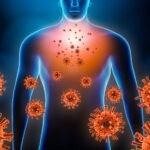Dec. 1, 2020 — An influential government committee has recommended that health care workers and people who reside in long-term care facilities get the first doses of COVID-19 vaccines when they become available.
In a 13-to-1 vote, the Advisory Committee for Immunization Practices (ACIP) said health care workers and residents of nursing homes and other residential care facilities should be first in line to get COVID-19 vaccines.
Health care workers include any paid staff or volunteers who work in health care settings. Long-term care facility residents include adults who live in facilities that provide medical or personal care to people who cannot live independently.
The vote follows months of deliberation by the committee to determine the most effective and fairest way to distribute scarce early doses. It follows similar recommendations made by the National Academies of Sciences in October.
The ACIP is made up of 15 voting members, eight nonvoting members from other government agencies, and 30 nonvoting members of other organizations that have expertise and interest in vaccination. The committee has met frequently this year to prepare for the COVID-19 vaccine rollout.
If the recommendation is approved by CDC Director Robert Redfield, MD, it will be passed on to states, which have already been working with the agency to create their distribution plans.
This recommendation is not binding, though states usually follow the ACIP’s guidance.
The ACIP prioritized health care workers for vaccination because of a “multiplier effect” — keeping them healthy ensures the health of others. The CDC says there are roughly 21 million health care workers in the U.S. More than 3 million Americans are residents in skilled nursing or assisted living facilities or other group care homes.
In making its recommendation, the committee prioritized saving lives over using the vaccine to slow disease transmission.
“I think everyone pretty much across the board agrees that with a limited number of doses, the best approach is to try to protect as many of the high-risk people as possible. That places health care workers at the very top,” says Josh Michaud, PhD, associate director of global health policy for the Kaiser Family Foundation in Washington, D.C.
“If you wanted to quash transmission, you would target your vaccination programs to those who do the most transmission in the United States, which is sort of young adults,” he says.
It is generally expected that vaccine acceptance will be high among health care workers, a group that will also be closely watched for any side effects related to the vaccines. The CDC has developed a voluntary cellphone-based system called V-Safe that will monitor health care workers via regular text messages and phone calls.
But survey results presented at a previous ACIP meeting revealed significant worry about the vaccines even among this group. In a CDC survey of health care workers, 63% of them said they would get the vaccine. A separate survey by the American Nurses Foundation found only 34% of nurses said they would get the vaccine if their employer doesn’t require them to do it, 36% said they would not get a COVID-19 vaccine, and 31% said they were unsure.
CVS and Walgreens have signed agreements with the federal government to give vaccines to residents of long-term care facilities, agreeing to make three visits per facility to dole out shots.
Initial doses of a vaccine could be sent out as early as mid-December, Vice President Mike Pence told governors during a call on Monday.
Once a vaccine is approved, things will move quickly.
Nancy Messonnier, MD, director of the National Center for Immunization and Respiratory Diseases, says most jurisdictions expect to be able to vaccinate all their health care workers within about 3 weeks of vaccine approval.
After the first vaccine deliveries, 5 million to 10 million more doses could be delivered each week on a rolling basis.
The FDA is scheduled to make a decision about Pfizer’s emergency use authorization for its COVID vaccine after an advisory panel meets on Dec. 10 to review the company’s application.
The ACIP will meet and vote again on recommendations for specific products after they are approved by the FDA. Those recommendations trigger financial reimbursements by the federal government’s health plans like Medicare and Medicaid.
Ultimately, the governors of each state will decide how early doses of the vaccines are distributed.
“In the final say, it will be our nation’s governors in implementing the distribution plans to tell us … where to ship, and they will decide who the vaccine is given to. We hope our recommendations will carry weight with them, but at the end of the day, they will make that decision,” Health and Human Services Secretary Alex Azar said in an Operation Warp Speed news briefing last week.
He said the vaccine would be distributed to states according to a formula based on each state’s adult population.
Gen. Gus Perna, chief operating officer of Operation Warp Speed, said in a Nov. 23 news briefing that he was planning for at least 6.4 million vaccine doses to go to states in the first push.
Operation Warp Speed has not yet released the list of the doses that will be allocated to each state.
For a short time, supplies of vaccine won’t cover everyone even in the groups flagged for first priority. So states will have to decide which workers and residents most need the vaccine.
On Tuesday, the CDC further recommended that health care workers who have direct contact with patients and can’t telework be first of the first. They also suggested that residents in nursing homes get priority over residents of other kinds of residential facilities because they tend to be older and more physically frail.
One major issue to be ironed out is what to do for health care workers who are pregnant or nursing. The CDC says 75% of health care workers are women, and as many as 330,000 may be pregnant when a vaccine becomes available. While COVID poses a greater risk to pregnant women, the CDC says it has no data on mRNA vaccines, like the type made by Pfizer and Moderna, in pregnancy. The agency says it’s awaiting information from the clinical trials for review.
On Monday, California Gov. Gavin Newsom announced that his state expected to receive 327,000 doses of Pfizer’s vaccine in mid-December. The state has more than 2 million health care workers, meaning that the first doses will fall far short of meeting the full demand even for people who get first priority.
According to a graphic released by Operation Warp Speed, Pfizer will distribute its own vaccines, which require ultracold storage. The Moderna vaccine will be distributed by McKesson, which has a longstanding contract with the CDC and distributed vaccines during the H1N1 flu epidemic. McKesson also distributes seasonal flu vaccines to states.
Both Pfizer’s and Moderna’s vaccines require two doses per person. Pfizer’s vaccine needs a booster 3 weeks after the first dose. Moderna’s second dose is given 4 weeks later.
In the Nov. 23 news briefing, Azar, the HHS secretary, said he expected to have enough vaccine to vaccinate those who are most vulnerable by the end of December.











